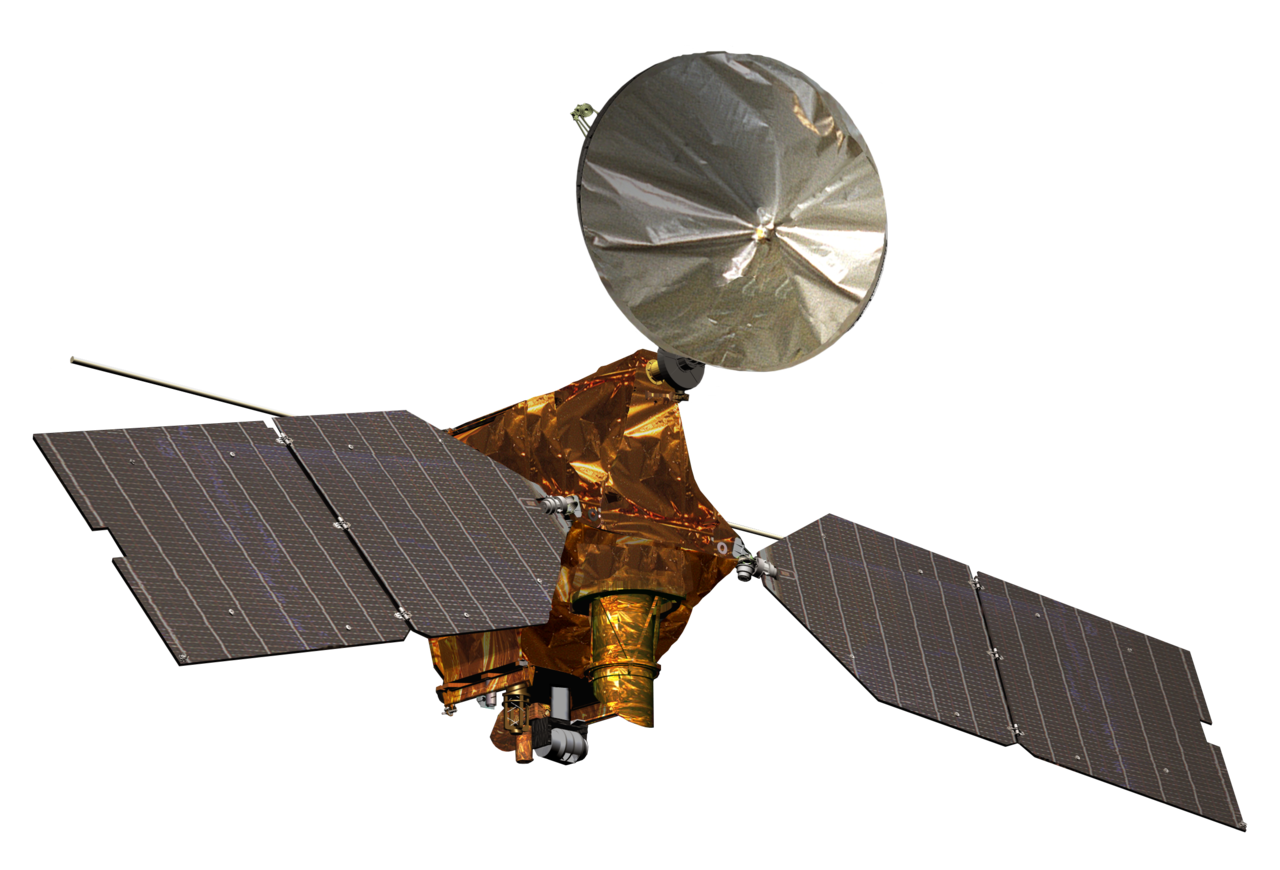NASA announces that its Mars Reconnaissance Orbiter has captured photographic evidence of possible liquid water on Mars during warm seasons.
Mars Reconnaissance Orbiter (MRO) is a multipurpose spacecraft designed to conduct reconnaissance and exploration of Mars from orbit. The US$720 million spacecraft was built by Lockheed Martin under the supervision of the Jet Propulsion Laboratory (JPL). The mission is managed by the California Institute of Technology, at the JPL, in Pasadena, California, for the NASA Science Mission Directorate, Washington, D.C. It was launched August 12, 2005, and attained Martian orbit on March 10, 2006. In November 2006, after five months of aerobraking, it entered its final science orbit and began its primary science phase. As MRO entered orbit, it joined five other active spacecraft that were either in orbit or on the planet's surface: Mars Global Surveyor, Mars Express, 2001 Mars Odyssey, and the two Mars Exploration Rovers (Spirit and Opportunity); at the time, this set a record for the most operational spacecraft in the immediate vicinity of Mars. Mars Global Surveyor and the rover Spirit have since ceased to function. Opportunity has remained silent since June 10, 2018, and NASA declared its mission complete on February 13, 2019. As of that date, 2001 Mars Odyssey and MRO continue to remain operational.
MRO contains a host of scientific instruments such as cameras, spectrometers, and radar, which are used to analyze the landforms, stratigraphy, minerals, and ice of Mars. It paves the way for future spacecraft by monitoring Mars' daily weather and surface conditions, studying potential landing sites, and hosting a new telecommunications system. MRO's telecommunications system will transfer more data back to Earth than all previous interplanetary missions combined, and MRO will serve as a highly capable relay satellite for future missions.[2] It has enough propellant to keep functioning into the 2030s.
Mars Reconnaissance Orbiter (MRO) is a multipurpose spacecraft designed to conduct reconnaissance and exploration of Mars from orbit. The US$720 million spacecraft was built by Lockheed Martin under the supervision of the Jet Propulsion Laboratory (JPL). The mission is managed by the California Institute of Technology, at the JPL, in Pasadena, California, for the NASA Science Mission Directorate, Washington, D.C. It was launched August 12, 2005, and attained Martian orbit on March 10, 2006. In November 2006, after five months of aerobraking, it entered its final science orbit and began its primary science phase. As MRO entered orbit, it joined five other active spacecraft that were either in orbit or on the planet's surface: Mars Global Surveyor, Mars Express, 2001 Mars Odyssey, and the two Mars Exploration Rovers (Spirit and Opportunity); at the time, this set a record for the most operational spacecraft in the immediate vicinity of Mars. Mars Global Surveyor and the rover Spirit have since ceased to function. Opportunity has remained silent since June 10, 2018, and NASA declared its mission complete on February 13, 2019. As of that date, 2001 Mars Odyssey and MRO continue to remain operational.
MRO contains a host of scientific instruments such as cameras, spectrometers, and radar, which are used to analyze the landforms, stratigraphy, minerals, and ice of Mars. It paves the way for future spacecraft by monitoring Mars' daily weather and surface conditions, studying potential landing sites, and hosting a new telecommunications system. MRO's telecommunications system will transfer more data back to Earth than all previous interplanetary missions combined, and MRO will serve as a highly capable relay satellite for future missions. It has enough propellant to keep functioning into the 2030s.

































































0 comments
Sign in or create a free account